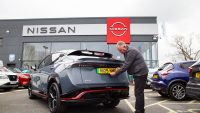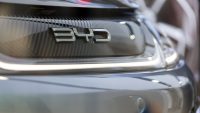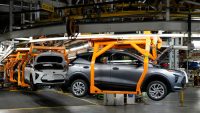The much-anticipated recent Tesla Cybercab reveal a fortnight ago was expected to be a significant moment for the industry, even potentially revolutionising the concept of urban mobility.
However, instead of being met with widespread acclaim, the Cybercab reveal left many underwhelmed and disappointed.
Indeed, Tesla’s share price immediately dropped. Ride-hailing rivals like Uber and Lyft meanwhile gained. Telsa’s share price has since recovered on the back of upbeat sale forecasts for 2025 but doubts remain over Tesla’s pivot to autonomous technology.
So, what exactly went wrong?
Overhyped
A big factor at play was the enormous hype that preceded the event. For months, Tesla had been building anticipation with teaser videos, cryptic social media posts, and promises of groundbreaking innovation.
Much of this hype revolved around the idea that the Cybercab would be not just another electric vehicle, but a completely new concept in urban mobility—an autonomous, electric cab capable of navigating cities without human intervention.
It was supposed to be a game-changer, blending cutting-edge artificial intelligence, EV technology, and innovative design to create a seamless, fully autonomous ride-sharing experience.
Given such promises, expectations soared. Investors, tech geeks, EV ‘voltheads’ and urban planners alike hoped the Cybercab would usher in a new era of driverless mobility on demand, smart cities and efficient transport.
Sadly, when the glitzy reveal finally happened, many felt that the reality fell short of the sky-high expectations.
Divisive design
Then there was the Cybercab’s design. Pre-reveal hype suggested that the vehicle would feature a sleek, futuristic aesthetic, with a focus on minimalism, comfort, and practicality for city dwellers.
However, when finally shown to the public, the Cybercab’s angular and boxy exterior looked more like a sci-fi film prop from the early 2000s than the cutting-edge vehicle people had expected.
On the inside, things looked rather lacklustre. While the Cybercab featured digital interfaces and comfortable seating, it didn’t offer the kind of breakthrough user experience that many had expected.
The result was a product that didn’t live up to its promise of being a futuristic, comfortable, and efficient urban transport solution.
Autonomous apathy
Perhaps the biggest source of disappointment was the Cybercab’s autonomous capabilities, or rather lack thereof.
Leading up to the reveal, much of the excitement stemmed from the belief that the Cybercab would be one of the first fully autonomous, commercially available vehicles, capable of navigating complex urban environments without human intervention.
In reality, the vehicle’s autonomous technology was far less advanced.
While the Cybercab did feature some degree of automation, it was far from the fully self-driving vehicle that had been promised. The reveal showcased a vehicle that could handle basic tasks like lane keeping, adaptive cruise control, and limited self-parking.
But these features are already standard in many high-end cars. The Cybercab seemed heavily reliant still on human oversight and intervention, particularly in complex urban environments with unpredictable traffic patterns, pedestrians, and cyclists.
In that Tesla seemed to be lagging behind the likes of Waymo.
Financial markets in particular were disappointed by the perceived gap between the expectations of full autonomy and the reality of partial automation.
The hope had been that the Cybercab would represent a leap forward in self-driving technology, but the reveal demonstrated that we are still years away from true autonomy.
Tesla talked about being four years from production ramp up, but the reality could well be much longer than that given Tesla’s track record of missed deadlines.
Investors realised that we are years away from full autonomy and the share price took an immediate hit.
A big challenge for any new autonomous vehicle is regulatory approval. Fully autonomous vehicles require rigorous testing and must comply with a host of safety standards, which can delay their introduction to the market by several years.
The Cybercab was far from ready for such approval, as the vehicle’s autonomous systems were not yet reliable enough for unsupervised operation in real-world conditions.
Cost concerns
Concerns remain about the vehicle’s likely cost structure and price. A key selling point of the Cybercab is its supposed affordability as a shared transport option.
Yet with no steering wheel or pedals, it was difficult to see how the platform could be shared with say a low cost regular ‘Model 2’ which the markets really want from Tesla.
With the current EV market already facing pricing challenges, introducing a new, technologically complex vehicle like the Cybercab could well present significant financial risks.
Is this what the market really wants?
Finally, there was a question of whether the Cybercab really offers what urban markets want right now.
The reveal failed to offer concrete solutions for issues like reducing congestion, improving public transport integration, or providing affordable mobility options for underserved communities.
Instead, the Cybercab came across as a luxury product designed for the tech elite, rather than a practical solution to real-world urban transport problems.
A cautionary tale of hype vs. reality
Overall, the market’s disappointing reaction to the Cybercab reveal serves as a cautionary tale about the dangers of overhyping a product before it’s ready for market.
While the idea of a fully autonomous, electric urban transport vehicle is no doubt exciting, the Cybercab ultimately fell short of the expectations that had been hyped up beforehand.
The underwhelming design, limited autonomy capabilities, and doubts about feasibility all contributed to the sense of disappointment post reveal.
For Tesla, this serves as a reminder that while an ambitious vision can generate much excitement and investor support, ultimately it must be backed up by tangible progress and a clear understanding of market needs.
As the race to develop autonomous vehicles continues, the Cybercab reveal highlights the challenges that still lie ahead and the importance of managing expectations in an industry where technological breakthroughs can take much longer to materialise than many hope.


































